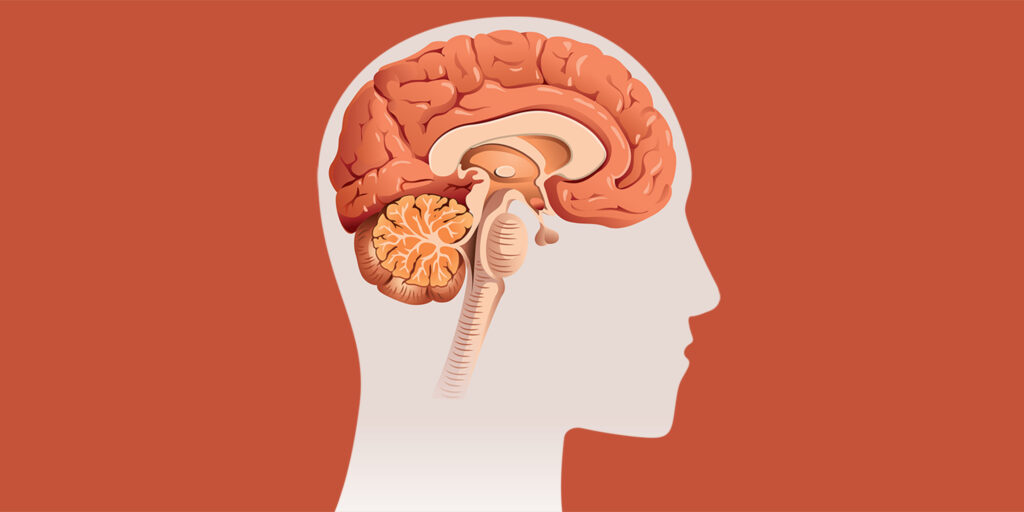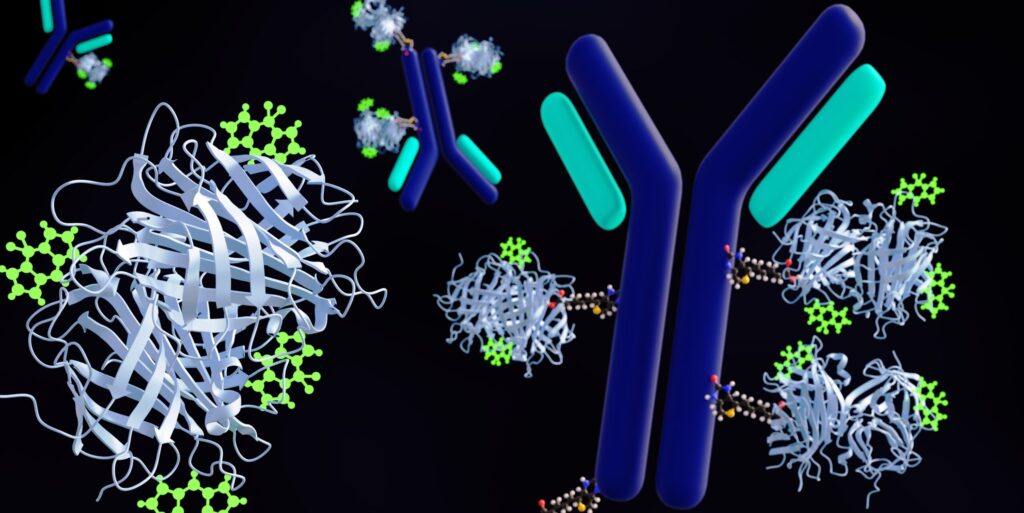
Understanding Spinal-Bulbar Muscular Atrophy
By Matt Schur | Friday, November 14, 2025
Spinal-bulbar muscular atrophy (SBMA) is a genetic disorder that affects muscles and nerves, leading to loss of nerve cells in the spinal cord and brainstem. The “bulbar” part of SBMA refers to the bulb-like structure in the lower part of the brain, which controls the muscles in the face, mouth, and throat. People with SBMA experience progressive weakness in voluntary muscles, including the facial and swallowing muscles, and the upper arm and leg muscles.

Christopher Grunseich, MD
SBMA is sometimes called Kennedy’s disease, named after William Kennedy, the physician who first described the disease in 1968. SBMA usually progresses slowly, typically over decades.
Christopher Grunseich, MD, a Lasker Clinical Research Scholar in the Inherited Neuromuscular Diseases Unit at the National Institutes of Health, sheds light on the latest in SBMA research.
Who is affected by SBMA?
It typically takes effect in a person’s mid-40s and progresses slowly, meaning it can go unnoticed for a long time. It’s caused by a genetic mutation on the X chromosome, so it primarily affects males; females with the genetic mutation are carriers for the condition. If females are symptomatic, they can have cramping and tremors, but they usually don’t manifest with weakness.
How is SBMA typically diagnosed?
The key early features of the disease are muscle loss, weakness, and/or cramping, which will usually trigger an evaluation by a neurologist. They may perform a creatine kinase (CK) test, and CK can be elevated about five to six times above normal levels. That is a reflection of the muscle breakdown. Family history can also be helpful in diagnosis. Doctors typically recommend genetic testing to confirm a diagnosis. Genetic testing can be conducted based on a family history, but it should always be done in consultation with a genetic counselor to discuss the benefits and risks of genetic testing.
There are other signs and symptoms, including androgen insensitivity, which means the body does not respond to male hormones. This could present as breast enlargement, testicular atrophy, and infertility, along with other metabolic symptoms, such as insulin resistance. In our lab testing, we’ve also found that between 80% to 90% of SBMA patients can have nonalcoholic fatty liver disease.
What really sets this disease apart from other related conditions is the sensory neuropathy. Patients can experience a loss of sensation and feel numbness. Typically, the fingertips or feet are among the first parts of the body to lose sensation.
What does treatment look like?
Right now, we don’t have any treatments that impact the progression of the disease. What works best is a multidisciplinary approach, which typically involves:
- A neurologist to oversee care
- Physical therapy to identify how patients may benefit from strength exercises or assistive devices to improve their gait and reduce the risk of falls
- Occupational therapy to improve hand and arm function
- Speech therapy, including exercises for the bulbar muscles, to reduce the risk of choking and improve speech
- Sleep studies to detect sleep apnea
- An endocrinologist to monitor for insulin resistance and liver disease
Are there any promising treatments in development?
I’m currently engaged in a phase 1/2 study of a drug called AJ 201. The genetic mutation that causes SBMA leads to muscle and neuron degeneration through mechanisms involving cellular toxicity, oxidative stress, and neuroinflammation. AJ201 is a unique drug compound that has shown potential to reduce that toxicity. Some encouraging preliminary results indicate that AJ201 may reduce CK levels and improve muscle function. With these supportive findings, we hope to advance to a phase 3 study in 2026. There are two other drugs in phase 2 trials, NIDO-361 and clenbuterol, which also look encouraging.
With these trials, it’d be terrific to see stabilization of muscle function and less muscle degeneration. If we could stabilize the muscle membrane and prevent the continued atrophy and fatty replacement of the muscle, I think that would provide a meaningful impact on the lives of people with SBMA.
What else should patients and families know?
The Kennedy’s Disease Association has set up a registry in partnership with Coordination of Rare Disease at Sanford (CORDS). The registry enables research teams designing studies to identify patients, determine potential interest, and contact patients if they are eligible. It doesn’t automatically sign you up for research. It simply provides a venue for the research teams to inform interested patients that these studies are taking place. I would suggest that any patient who’s interested in participating in research studies or clinical trials consider joining the registry.
Matt Schur is a Chicago-based writer and editor who frequently covers health topics.
Next Steps and Useful Resources
To find more information about SBMA treatment, consult these resources:
- MDA’s Spinal-Bulbar Muscular Atrophy webpage
- MDA’s Spinal-Bulbar Muscular Atrophy disease fact sheet
- Best practice recommendations for the clinical care of spinal bulbar muscular atrophy
- The French national protocol for Kennedy’s disease (SBMA): consensus diagnostic and management
Stay up to date on Quest content! Subscribe to Quest Magazine and Newsletter.
TAGS: Clinical Trials, Drug Development, Genetic Testing, Spotlight
TYPE: Featured Article
Disclaimer: No content on this site should ever be used as a substitute for direct medical advice from your doctor or other qualified clinician.




